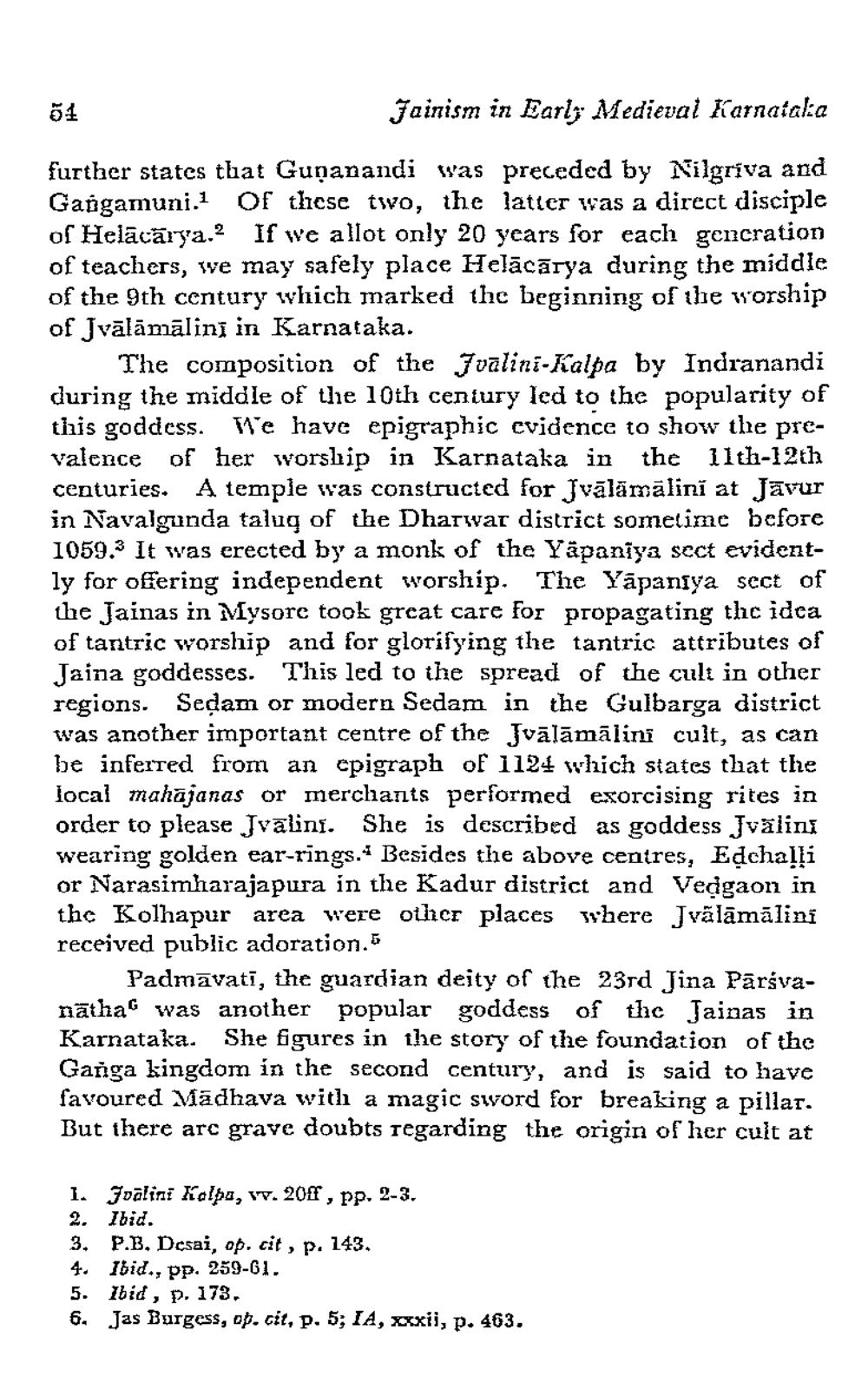________________
Jainism in Earl; Medieval karnataka
further states that Gunanandi was preceded by Nilgriva and Gangamuni.l Of these two, the latter was a direct disciple of Helācārya.2 If we allot only 20 years for each gencration of teachers, we may safely place Helācārya during the middle of the 9th century which marked the beginning of the worship of Jvālāmālinj in Karnataka.
The composition of the Jvalini-lialoa by Indranandi during the middle of the 10th century led to the popularity of this goddess. We have epigraphic evidence to show the prevalence of her worship in Karnataka in the 11th-12th centuries. A temple was constructed for Jvālāmālini at Jāvur in Navalgunda taluq of the Dharwar district sometime before 1059. It was erected by a monk of the Yäpaniya sect evidently for offering independent worship. The Yāpansya sect of the Jainas in Mysore took great care for propagating thc idea of tantric worship and for glorifying the tantric attributes of Jaina goddesses. This led to the spread of the cult in other regions. Sedam or modern Sedam in the Gulbarga district was another important centre of the Jvālāmālini cult, as can be inferred from an epigraph of 1124 which states that the local mahajanas or merchants performed exorcising rites in order to please Jvalini. She is described as goddess Jvälini wearing golden ear-rings.' Besides the above centres, Edchalli or Narasimharajapura in the Kadur district and Vedgaon in the Kolhapur area were other places where Jvälāmālini received public adoration."
Padmavatī, the guardian deity of the 23rd Jina Pārsvanātha was another popular goddess of the Jainas in Karnataka. She figures in the story of the foundation of the Ganga kingdom in the second century, and is said to have favoured Madhava with a magic sword for breaking a pillar. But there are grave doubts regarding the origin of her cult at
1. Joalini Kolpa, vv. 2011, pp. 2-3. 2. Ibid. 3. P.B. Dcsai, op. cit., p. 143. 4. Ibid., pp. 259-61. 5. Ibid, p. 173 6. Jas Burgess, op. cit, p. 5; IA, xxxii, p. 463.




